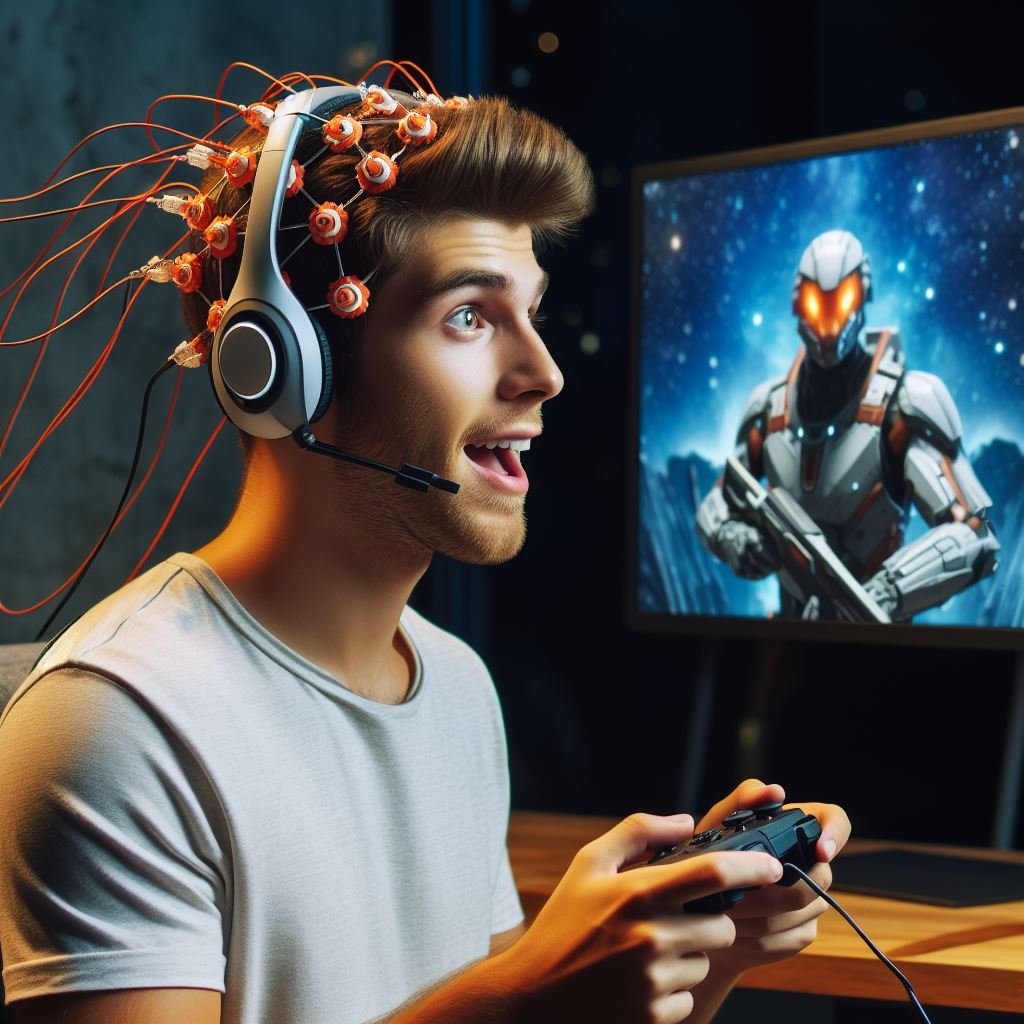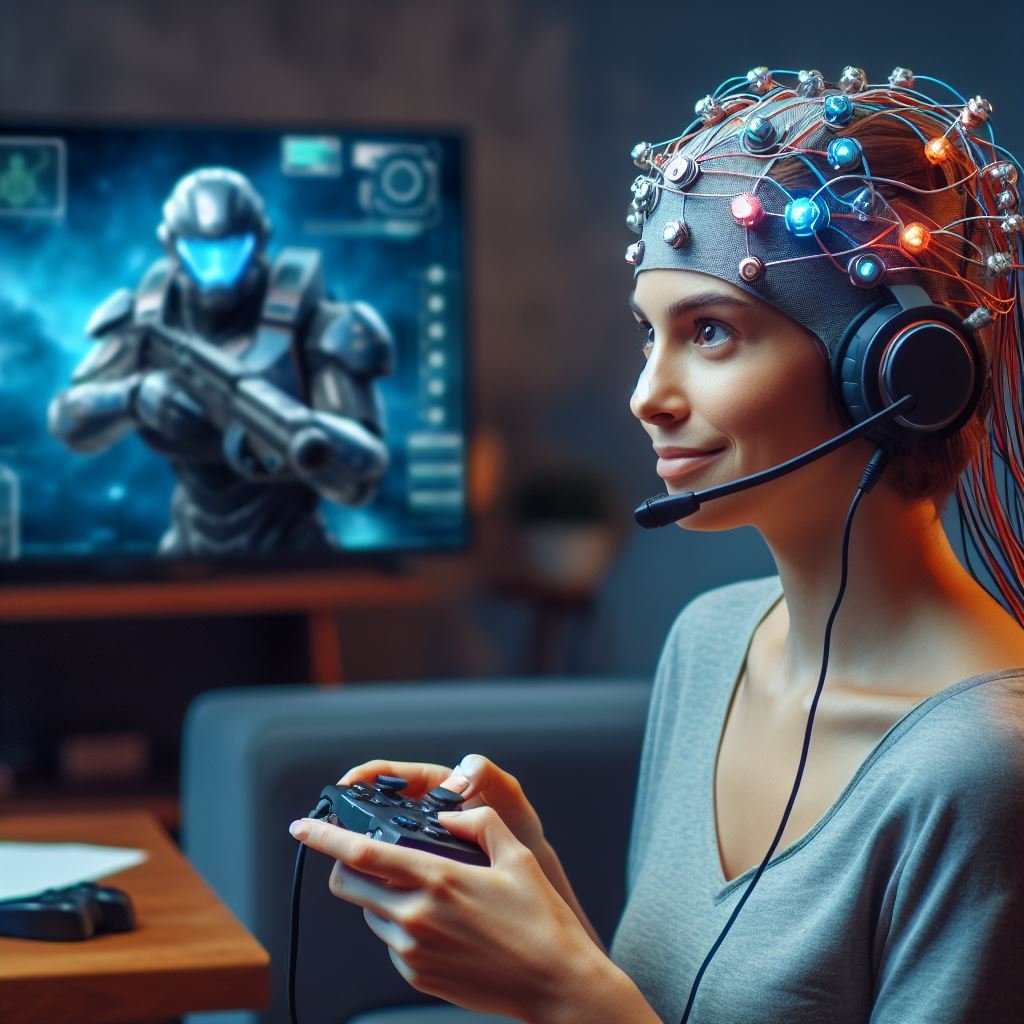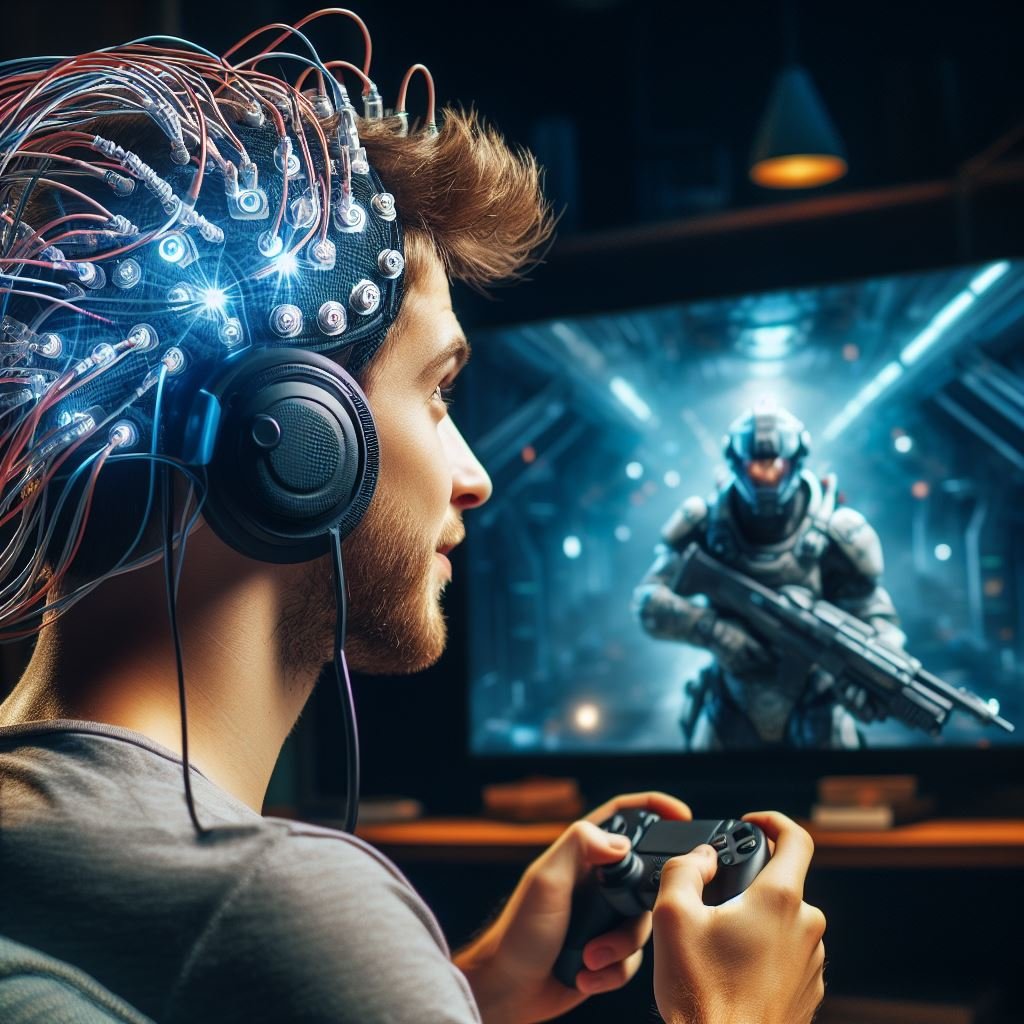Gaming with Your Mind: The Rise of Neurogaming
Are you tired of using a controller or a keyboard to play your favorite video games? Well, get ready to step into the future of gaming with brain-computer interface technology, also known as neurogaming. This revolutionary technology allows you to control games using nothing but your mind. It may sound like science fiction, but neurogaming is quickly becoming a reality, and its potential is truly mind-blowing.

Imagine controlling a character in a virtual world not with buttons and sticks, but with the power of your thoughts. This is the fascinating realm of neurogaming, where brain-computer interfaces (BCIs) bridge the gap between mind and machine, revolutionizing the way we interact with games. But what does this future hold? Let’s dive into the potential, limitations, and exciting possibilities of this nascent technology.
The Basics of Brain-Computer Interface
Brain-computer interface (BCI) technology enables direct communication between the brain and an external device, such as a computer or a gaming console. It works by detecting and interpreting brain signals, which are then translated into commands that can be used to control a game. This is achieved through the use of sensors that pick up electrical activity in the brain.
Neurogaming takes BCI technology a step further by integrating it into the gaming experience. Instead of using a traditional controller, players wear a headset or other wearable device that reads their brain signals. These signals are then used to control in-game actions, such as moving characters, selecting options, or even performing complex tasks.
The Potential of Neurogaming
The potential of neurogaming is vast and exciting. Imagine being able to control a game character with your thoughts, making gameplay feel more immersive and natural than ever before. Neurogaming has the potential to revolutionize the way we play games, making them more accessible and inclusive for people with physical disabilities or limited mobility.
BCI technology also opens up new possibilities for game developers. They can create games that respond to the player’s emotions, adapting the gameplay based on their level of engagement or excitement. This could lead to more personalized and dynamic gaming experiences, where the game itself evolves based on the player’s mental state.
Furthermore, neurogaming has the potential tobrain computer interface gaming be used for therapeutic purposes. Researchers are exploring how BCI technology can be used to help people with cognitive impairments or mental health conditions. For example, neurofeedback games can be used to train the brain and improve focus, attention, and relaxation.
Enhanced Immersion
Imagine feeling the virtual world around you, not just seeing it. BCIs could translate brainwaves into in-game sensations, creating an unparalleled level of immersion. Dodging a fireball wouldn’t just be a visual experience; you’d feel the heat graze your virtual skin.
Personalized Gameplay
Neurogaming could tailor difficulty and challenges to your individual cognitive abilities, offering a truly personalized gaming experience. Imagine a game that adjusts to your frustration level or learning pace, keeping you engaged and challenged.
Accessibility Revolution
BCIs could open up gaming to individuals with motor limitations who struggle with traditional controllers. Imagine controlling characters or menus with the power of thought, making the world of gaming more inclusive than ever before.
The Limitations of Neurogaming
While neurogaming holds immense promise, it also has its limitations. One of the main challenges is the accuracy and reliability of brain signal detection. The technology is still in its early stages, and there are limitations in the resolution and interpretation of brain signals. This can lead to inaccuracies or delays in gameplay, which may affect the overall experience.
Another limitation is the cost and accessibility of BCI devices. Currently, neurogaming equipment can be expensive and may require specialized training or support. This limits its availability to a wider audience. However, as the technology advances and becomes more mainstream, we can expect the costs to decrease and accessibility to improve.
Accuracy and Speed
Current BCI technology is still in its early stages, and deciphering brain signals with perfect accuracy and speed remains a challenge. This can lead to lag and frustration, hindering the gameplay experience.
Cost and Accessibility
BCI technology is expensive and not readily available, making it difficult for the average gamer to access. This creates a barrier to entry and limits the widespread adoption of neurogaming.
Ethical Concerns
The ability to directly tap into the brain raises ethical concerns about privacy, data security, and potential manipulation. Open and transparent discussions are crucial to ensure responsible development and use of this technology.

The Future of Neurogaming
Despite its limitations, the future of neurogaming looks incredibly promising. As the technology continues to advance, we can expect more sophisticated and intuitive brain-computer interfaces. This will lead to more immersive and realistic gaming experiences, blurring the line between the virtual world and reality.
Additionally, neurogaming has the potential to extend beyond gaming. It can be applied to various fields, such as education, healthcare, and even military training. The ability to control devices or interact with virtual environments using our minds opens up a world of possibilities
As BCI technology evolves, so too will the potential of neurogaming. Advancements in signal processing, machine learning, and cost-effectiveness could overcome current limitations, making immersive and accessible brain-controlled gaming a reality. We can imagine:
- Neuro-controlled virtual worlds
Imagine exploring expansive virtual landscapes, interacting with characters, and manipulating objects all with the power of your thoughts. - Evolving game mechanics: Neurofeedback could be used to adjust difficulty dynamically, adapt to player emotions, and even create personalized storylines based on cognitive responses.
- Augmented reality experiences: BCIs could overlay virtual elements onto the real world, creating immersive and interactive experiences that blend physical and digital realms.
Conclusion
Neurogaming holds immense potential to transform the gaming landscape, offering unparalleled immersion, personalized experiences, and accessibility. While challenges remain, advancements in technology and ethical considerations are paving the way for a future where our minds truly become the ultimate gaming controllers. So, get ready to level up your mind, because the future of gaming is about to get truly mind-blowing.
If you enjoyed this read, please browse around InnoVirtuoso for more.







